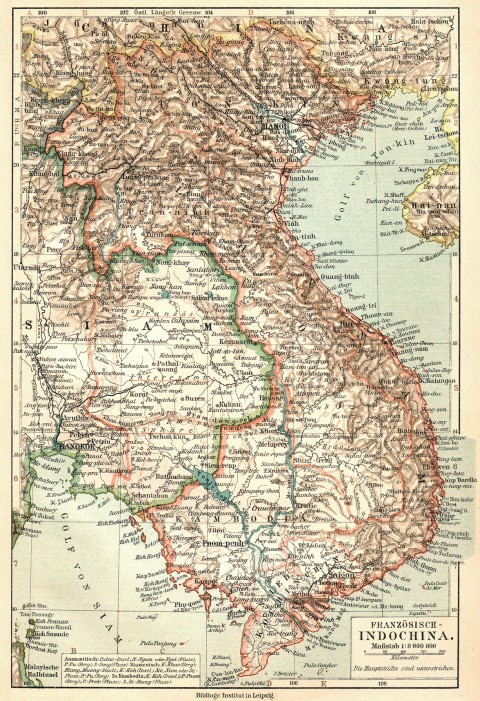Việt Nam
Vietnam (viːətˈnɑːm/, /viˌɛt-/, /-ˈnæm/, /ˌvjɛt-/; Vietnamese pronunciation: [viət˨ naːm˧] officially the Socialist Republic of Vietnam (Cộng hòa Xã hội chủ nghĩa Việt Nam), is the easternmost country on the Indochina Peninsula in Southeast Asia. With an estimated 90.3 million inhabitants as of 2012, it is the world’s 13th-most-populous country, and the eighth-most-populous Asian country. The name Vietnam translates as “South Viet”, and was officially adopted in 1945. The country is bordered by China to the north, Laos to the northwest, Cambodia to the southwest, and the South China Sea to the east.[8] Its capital city has been Hanoi since the reunification of North and South Vietnam in 1976.
Geography
Vietnam is located on the eastern Indochina Peninsula between the latitudes 8° and 24°N, and the longitudes 102° and 110°E. It covers a total area of approximately 331,210 km2 (127,881 sq mi),[2] making it almost the size of Germany. The combined length of the country’s land boundaries is 4,639 km (2,883 mi), and its coastline is 3,444 km (2,140 mi) long.[2] Vietnam’s land is mostly hilly and densely forested, with level land covering no more than 20%. Mountains account for 40% of the country’s land area, and tropical forests cover around 42%.
The northern part of the country consists mostly of highlands and the Red River Delta. Phan Xi Păng, located in Lào Cai province, is the highest mountain in Vietnam, standing 3,143 m (10,312 ft) high. Southern Vietnam is divided into coastal lowlands, the mountains of the Annamite Range, and extensive forests. Comprising five relatively flat plateaus of basalt soil, the highlands account for 16% of the country’s arable land and 22% of its total forested land. The soil in much of southern Vietnam is relatively poor in nutrients.
The Red River Delta, a flat, roughly triangular region covering 15,000 km2 (5,792 sq mi),[83] is smaller but more intensely developed and more densely populated than the Mekong River Delta. Once an inlet of the Gulf of Tonkin, it has been filled in over the millennia by riverine alluvial deposits, and it advances 100 meters (328.1 ft) into the Gulf annually. The Mekong delta, covering about 40,000 km2 (15,444 sq mi), is a low-level plain no more than 3 meters (9.8 ft) above sea level at any point. It is criss-crossed by a maze of rivers and canals, which carry so much sediment that the delta advances 60 to 80 meters (196.9 to 262.5 ft) into the sea every year.
http://en.wikipedia.org/wiki/Vietnam
Foto:
http://commons.wikimedia.org/wiki/File:081_franzosisch-indochina_%281905%29.png
http://en.wikipedia.org/wiki/File:Bandovietnam-final-fill-scale.svg

